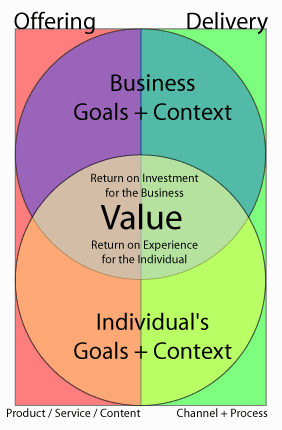
Facebook®, a social networking website located at http://facebook.com/, has recently gained popularity as an online tool to help market businesses. Accessible via the Web or the latest generation of smart cell phones and PDAs, Facebook's mission is to give people the power to share ideas and make the world more open and connected.
Because of the large number of users visiting this social platform, many businesses have turned to Facebook as a way to connect to potential customers. This can be done with a Facebook Fan page.
A Facebook Fan Pages' audience consists of "Fans." These are the Facebook users who have elected to ‘Become A Fan' of your business in order to receive updates about your business. The updates show up on that Facebook user's "wall" (a wall is a Facebook user's profile page) as they are added to the Fan Page. Many popular business Fan pages, including Victoria's Secret®, Toyota®, and Starbucks®, have thousands or tens of thousands of users who display Fan page updates on their walls.
Determining exactly how you might want to use Facebook for your business is the first step to take. A plan should be in place before you even set up an account.
Should I Use Facebook for My Business?
There is no hard and fast answer as to whether a business should be on Facebook. Consider the following and then decide whether this tool is right for you:
1. Upkeep: Setting up a Facebook account "just to be on it" is not useful. Social media is a continuous process that requires regular attention. Think of it as starting a conversation with your customers and "friends" of your customers. You don't want to just "go quiet" mid conversation. You will not attract new visitors or keep your current Fans coming back if you don't keep your Facebook Fan Page updated on a regular basis.
2. Time: Once you decide to use Facebook as a marketing platform, another consideration is how much time you should spend making the most of this marketing tool. Though it can be a useful tool, generating fresh content and keeping the page updated can be time consuming.
3. Fresh Content: Keeping your page updated with fresh, original content will keep your current Fans coming back and can also attract new Fans: Your updates will be visible to their friends and family on your Fan's wall and may entice them to visit your site and also become a Fan.
4. Monitoring the Discussion: You will also need to be able to monitor your wall and discussion boards to address and feedback your Fans are posting to your Facebook Page. Unaddressed or unnoticed issues can create more of a headache and is something you will need monitor consistently and be able to respond quickly.
5. Fan = Customer? Businesses should also be aware that a Fan doesn't equal an active customer. Many people who become Fans of a page are simply saying, "I like this." Facebook Fans don't necessarily interact with the company more or increase their level of spend.
6. Strategy: For Facebook to make sense for your business, you should target a specific goal that's relatable to your business strategy. Such a goal might be, "I want to increase revenue by 15% in 25-34 year olds." Then you could decide whether Facebook is one of the right platforms to reach your business demographic or if you should be spending your marketing efforts elsewhere.
Getting Started
Once you've taken all of the above into consideration and you've decided you'd like to utilize Facebook to help your business, you are ready to begin. There are a few ways you can engage with Facebook via a Fan Page.
1. Use Facebook for your business only with a Fan Page: Business accounts are easily set up by creating a page without setting up a personal profile first. This can be preferable to some people who don't want to provide a lot of personal information to get started. To create this type of account, just click on the link "Create a Page for a celebrity, band or business." This will give you access to your Fan pages. From here you may also administer an ad campaign. However, this type of account (where you haven't provided your information) will provide only limited access to your Fans' profiles and other features on the site. (Facebook Help Center FAQs on Business Accounts)
2. Using Facebook for personal and business: Many people already have a personal profile they use to connect with family and friends. If you already have a personal account, you just need to create a Fan Page for your business. Facebook is set up to be tied closely to your personal profile and your business page, so you many want to update the privacy settings on your personal profile to ensure you don't have any potentially embarrassing photos visible to business contacts. You can use Facebook Profile Privacy Settings to make updates.
3. Using Facebook for your business with a personal profile and Fan Page: If you haven't signed up for a personal profile yet, you can start one. Keep your business in mind. In other words, don't include personal pictures or personal information that's not relevant to your business contacts. You can use this page as a professional networking source and add a Fan Page to create greater awareness of your business.
Fan Page Setup
Thousands of people have created Fan pages, so don't be intimidated. It's easy.
1. Fan Page Name - When naming your Fan page, keep branding efforts in mind. If you have been promoting your company with a particular name, you should use that as your Fan Page name as well. Also, use spaces and full words while entering your business name. Your business will be easier to find when people do a search for your company on Facebook or in search engine such as Google®, both of which may be helpful as you manage your online reputation.
2. Link to Twitter® - If you have a Twitter account already, you can link your Fan Page to your Twitter account. This will add your updates, links, photos, notes and events to Twitter and allow your Twitter Followers to view all your Facebook information. Keep in mind that the content on your Fan Page should be unique so your Fans will keep coming back and not just become a Fan and forget about you. The same applies to your Twitter account. Having unique content on both Facebook and Twitter can keep your Fans and Followers engaged.
3. Photo - You want people to know it's your page with they arrive. Adding your logo as a photo to your Fan Page helps brand your Facebook Fan Page and can bring more awareness to your brand.
4. About - The next step is editing your page and providing useful information to let your people know who you are and what your mission is. You can list other ways people can connect with you: through your main website, blog, and social profiles you maintain.
5. Adding Content - Utilize the other Facebook tabs to add more content to your Fan Page. Changing these settings is only a matter of checking or un-checking a box on the Edit Page section of your Facebook Fan Page.
Wall - This tab is for viewing your recent activities and what your Fans are posting. If you are worried about what people will say when they add comments, you can limit what your Fans can post in the Fan Permissions area of the Wall Settings. However, not allowing comments might make them feel less connected with your Page and your business.
Discussion Boards - Allows users to engage with each other on your Page.
Events - You can let your Fans know about upcoming promotions, sales and other events.
Links - Make it easy for user to see your business's main domain name, newsletters or other value-added information.
Images - Visuals are at the top of the online accessibility pyramid: show products, events, etc.
Reviews - Fans can leave reviews about your business. This can be a good tool to interact with your customers and hear honest feedback. However, you should monitor this closely and respond immediately to any negative feedback.
Video - Appealing videos can really help keep your content fresh and interesting so Fans will come back to your page.
6. Other ways to add more content: You can use your Fan Page to connect with your customers and keep them engaged. Here are a few ways that you can add content to your Facebook page:
Content you create: Post details about business events in the Facebook events tab or display exclusive discounts to your Facebook Fans. Provide helpful information about topics that are on the mind of your ideal customer. You can include intriguing details about your products or services, but don't get too "salesy" or your Fans will feel "marketed to" and leave.
Auto Generated Content: You can include RSS (really simple syndication) feeds from your Blog(s) and Twitter® account. This will automatically insert the content from your blog posts and tweets into your Facebook page. This can help you to keep your content updated and help show activity on your site. Constant activity on your Facebook page can help your Fan Page rank higher in organic search engine results. However, you do want to be careful about having too much of the same information on a blog, twitter and Facebook. Having some information unique to Facebook will help entice your fans to return to your Facebook page.
Content your Fans create: There are many ways to encourage your fans to interact with your Fan Page, including discussion boards, surveys, and reviews of your products and services. Giving your visitors the ability to voice their questions and opinions on your Fan Page can keep them engaged and connected to your business. It may also give you more insight into your consumer's wants and needs.
7. More Applications - Many applications are available and can be easily added to your page. For example, a popular application is Static FBML (Facebook Markup Language). This application allows you to add custom HTML (Hyper Text Markup Language) to a tab to give you more control over how your page looks. If you decide to set up a custom page, you can set that as the default landing tab in the Wall Settings.
Gathering Fans
Once your company's Facebook profile is set up and you have added some information, it is a good time to begin building an audience of Fans. This should be done both on and off Facebook. This can be done in a number of ways:
Link to your company's Facebook Fan Page on your home page of your company website.
Link to your company's Facebook Fan Page in all email.
Become a Fan of your own Fan Page and suggest it to your Friends list.
Use Twitter to announce your new Fan Page and offer deals to new Fans.
Link to you Facebook Fan page on your Blog and other social profile sites.
Use Facebook content in email newsletters.
Post links from newsletter articles on Facebook.
Use Facebook to write about the latest news, worthwhile forum posts, controversial case studies, inspiring blog entries, etc.
Social Media Relations: It's Not Media Relations
Social media sites and the networking opportunities they provide are changing the way people market their businesses. Instead of mass advertising, social media has ushered in an era of inbound marketing.
Word-of-mouth marketing and the many avenues available for customer engagement means that businesses can leverage their current, loyal customer base to help market their business to other potential consumers. For example, if you provide interesting content, other users will share your posts with others, who can pass along the information to even more Facebook users. This can build new readership and attract new Fans. Here are a few rules to play by now that you're in Social Media Relations:
Play nice: What you publish on the Web, even though it can be deleted from Facebook, will still be archived permanently somewhere. Just as maintaining a reputation as a friendly source for helpful information can be good for business, negativity can have the opposite effect. Incendiary or extreme statements, heavy-handed marketing, or disrespectful language don't go far on Facebook or in any social media venue.
Encourage sharing: Provide free information and encourage others to share it; this will engage new potential customers as it harnesses the power of bloggers with high readership and a large number of Fans.
Avoid coercion: Do not try to trick potential customers.
Lose control: This might sound scary, but it's ok to lose control. Once the information you have published is out there, let people do with it what they will.
Conclusion
In many ways, using social media sites is based on common sense. Once you have learned the particulars of a certain tool like Facebook®, it becomes fairly intuitive. Be friendly, be helpful, share information, build a good reputation, and current and potential customers will know they can trust you. This is truly how to use Facebook to benefit your business.
If you have any questions, or if you would like for Network Solutions to set up a Facebook Fan Page for your business, contact your Account Manager at any time. We will be happy to help.
source: NetworkSolutions

CLICK my logo to experience great inexpensive solutions to GREAT BRANDING!a






















